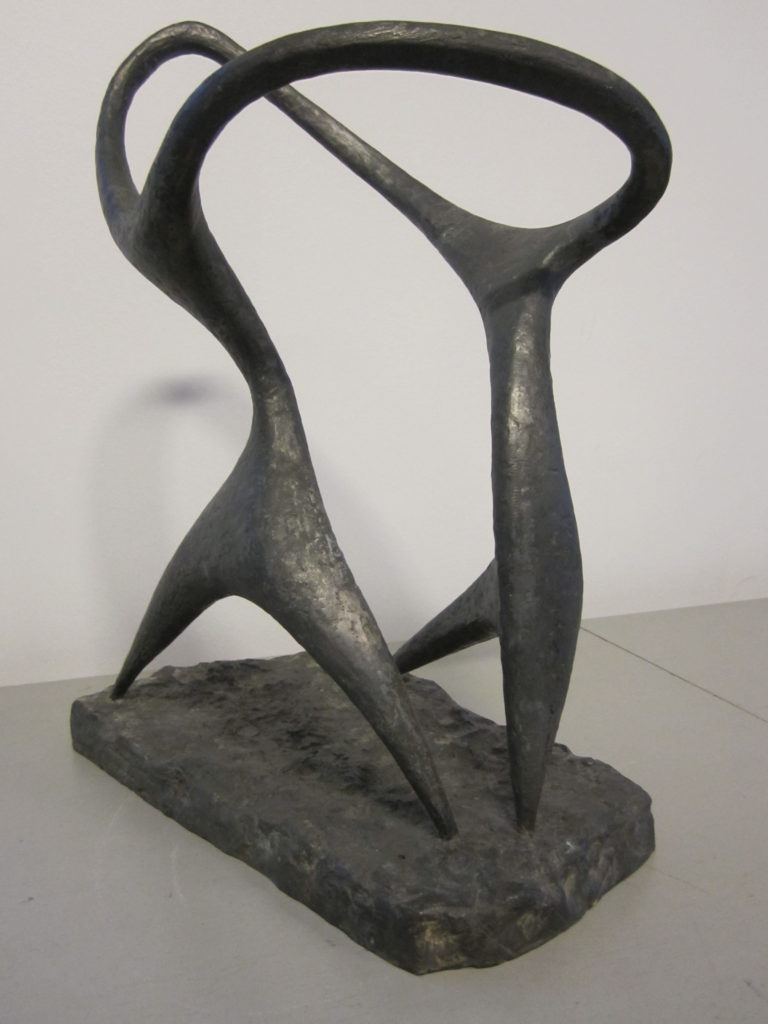Dancers

The sculptress Aase Texmon Rygh (b. 1925) was among the artists who paved the way for modernism’s breakthrough in Norwegian art after the war. With obstinate consistency, and beginning as early as with her debut at the Annual Autumn Exhibition in 1950 with Wooden Girl I, she has worked in an abstract idiom with references to dance, movement and mathematical phenomena and figures. Although the titles of her sculptures often refer to something concrete, and as such can be identified with a recognisable or observed reality, her agenda is first and foremost associated with an exploration of formal artistic means. She is particularly preoccupied with proportions, mass, space, lines and surfaces, and the significance that light has for an appreciation of the composition. In this sense, the early piece Dancers (1951) can stand as a characteristic example of Texmon Rygh’s work. Although the point of departure for the motif is clear enough – two human-like figures are entwined together in one elegant, rhythmic, dance movement – this does not overshadow the sculpture’s abstract qualities. Something that becomes even more evident if one walks around the sculpture and studies it from different angles.
OWG